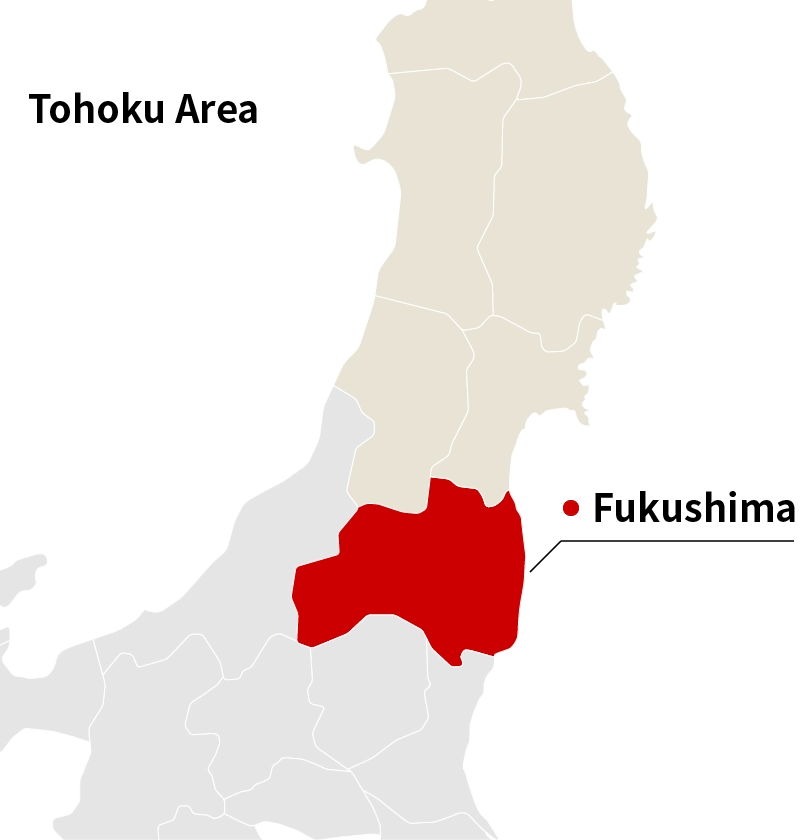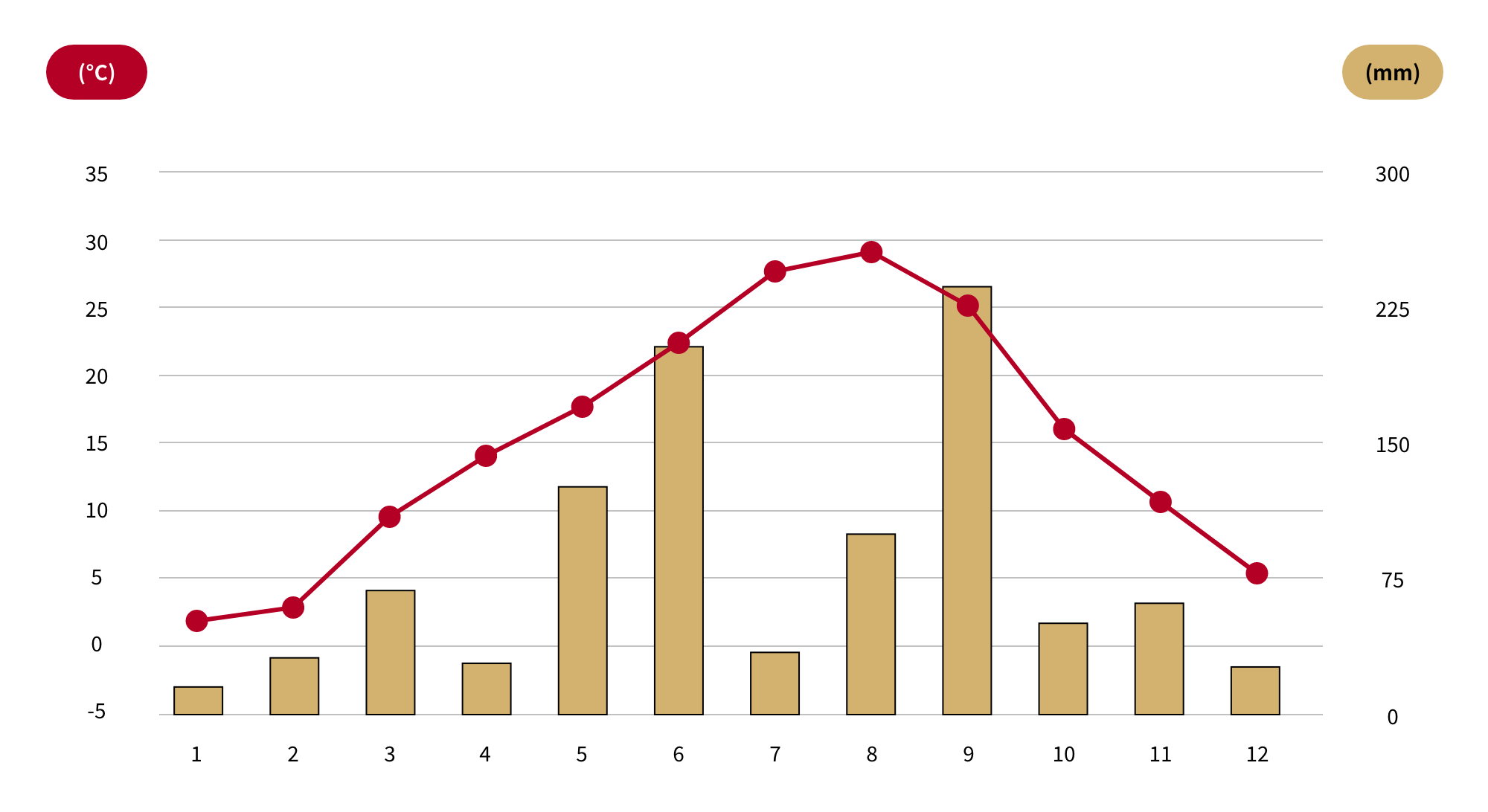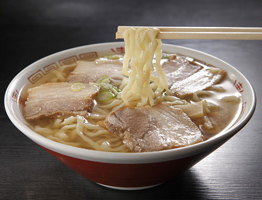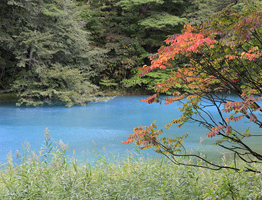일본 유학의 매력
발견! 지역별 NIPPON의 생활
- HOME
- 일본 유학의 매력
- 발견! 지역별 NIPPON의 생활
- Tohoku Area
- Fukushima
Fukushima
지역 개요
후쿠시마현은 전국에서 세 번째로 넓은 면적을 자랑하며 웅대한 자연과 맛있는 음식 그리고 마음 따뜻한 사람들이 사는 현으로 개성 풍부한 3개의 지역으로 나뉘어져 있습니다.풍부한 대자연과 아이즈 번사 연고의 명소 고적이 많이 보이는 '아이즈 지방'아름다운 꽃들과 신선한 과일이 가득한 '나카도리' 태평양에 접하며 웅대한 경관을 바라볼 수 있는 '하마도리'풍토, 문화, 기후도 다른 각각의 매력이 있어서 방문하는 사람에게 놀라움과 감동을 줍니다.
 ※이 지도에서는 지형이나 크고 작은 섬 등을 생략하여, 일본 전 지역을 표시하고 있지 않습니다.
※이 지도에서는 지형이나 크고 작은 섬 등을 생략하여, 일본 전 지역을 표시하고 있지 않습니다.
오시는 방법
- 신칸센 또는 전철을 이용하실 경우
-
현 내의 다른 신칸센 역으로는 고리야마역이 있습니다.
도쿄 출발
도쿄역
1시간 31분후쿠시마역
지역 주민이 추천하는 명소

소마노마오이
매년 7월에 후쿠시마현 소마시에서 개최되는 "소마노마오이(相馬野馬追)"는 1000년 이상의 역사가 있습니다.500기 이상의 기마무사가 갑옷으로 무장하여 달려가는 전국시대를 꼭 체험합시다!

온천
후쿠시마현은 130개가 넘는 온천이 있으며 지역마다 특색 있는 온천 마을이 있습니다. 숙박하는 것도 좋고 당일치기로 입욕하는 것도 좋으며 후쿠시마에서 온천 순회 여행을 해 보는 것은 어떻습니까?
지역 주민이 추천하는 음식
-

네기소바
후쿠시마현 시모고마치의 에도시대 모습이 남아 있는 숙소 "오우치주쿠".명물인 네기소바(파 메밀국수)는 곁들여진 1개의 파를 젓가락 대신 사용하는 것이 특징.능숙하게 먹을 수 있을지 도전해보세요!
-

과일
후쿠시마에서는 분지 특유의 기후와 풍토를 살려 초여름의 체리, 한여름의 복숭아, 가을의 배와 포도, 그리고 초겨울의 꿀이 들어간 사과 등 사계절의 신선한 과일을 즐길 수 있습니다.일년 내내 과일 따기 행사를 즐길 수 있어요!
기후(기온・강수량)
나카도리 지방의 경우 여름에 산간 지역은 그다지 덥지 않지만 분지는 상당히 무더워집니다. 겨울에는 찬 바람이 불고 눈도 내립니다. 아이즈 지방은 니혼카이 바다 쪽 기후로 여름에 산간 지역은 시원하지만 분지는 무더워집니다. 겨울에는 많은 눈이 내리고 기온도 상당히 내려갑니다. 하마도리 지방은 해양성 기후이므로 여름에는 바다에서 시원한 바람이 불어와 비교적 지내기 쉬우며 겨울에도 비교적 온난하고 강설일이 손에 꼽을 정도입니다.
월별 기온·강수량

(출처: 기상청)
물가
-
집세
41,103엔
-
광열 수도비
10,840엔
-
외식
(라면)640엔
-
식빵 1㎏
544엔
-
우유 1ℓ
295엔
※출처
- 월세
정부 통계 종합창구 '주택·토지 통계조사: 2023년'
각 현청 소재지의 연면적 29㎡ 이하 민영 차가(전용주택)의 1개월당 평균 임대료(월세 0엔 제외) - 광열 수도비
정부 통계 종합창구 '가계조사(가계수지편): 2023년'
각 현청 소재지의 세대별 '광열·수도'의 연간 지출 총계에서 월평균을 산출하여 평균 세대 인원수로 나눈 1인당 지출액 - 외식(라멘), 식빵 1kg, 우유 1ℓ
정부 통계 종합창구 '소매물가 통계조사(동향편): 2024년 8월'
관련 링크
유학생 수 국가별 랭킹
네팔
중국
미얀마
일본 국내 총 유학생 수: 279,274명
후쿠시마현 총 유학생 수: 1,009명
2023년도 '외국인 유학생 재적 상황 조사'에서
지역 대학 목록
본 사이트의 '학교・전문분야 검색하기'에서 정보를 공개하고 있는 학교가 9개교 이하일 경우 학교명을 무순으로 게재합니다. 10개 이상의 학교가 있을 경우 본 페이지에 게재하지 않지만, 아래의 '학교・전문분야 검색하기'에서 검색하시면 학교 목록을 확인하실 수 있습니다.











